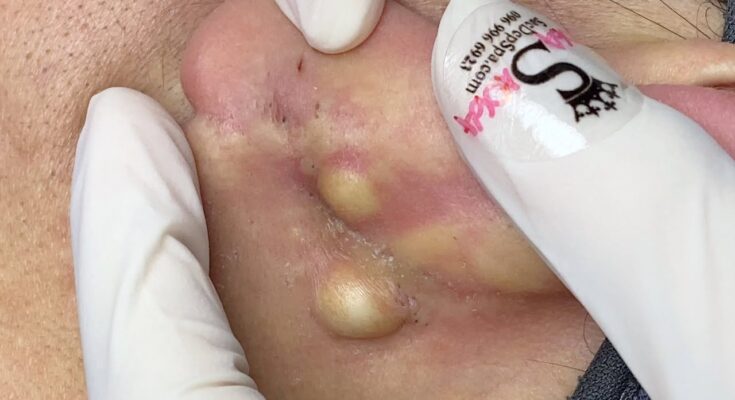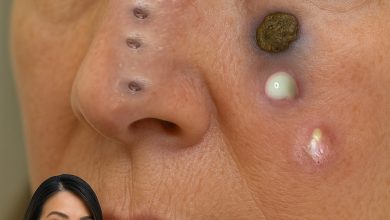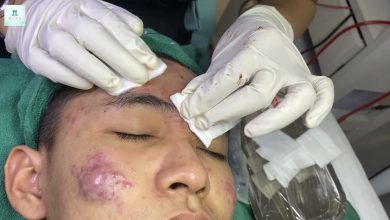Effective Botfly Maggot Removal: Step-by-Step Guide
Botfly infestations can be alarming, especially when you find out that the cause is a parasitic maggot. These creatures, often referred to as “botflies,” are known for laying eggs under the skin of humans and animals, which then hatch and develop into maggots. While the idea of maggot removal may be unsettling, it’s important to understand the process, how to identify the infestation, and the most effective way to safely remove the maggots. In this step-by-step guide, we’ll walk you through the process of botfly maggot removal, ensuring your safety and comfort.
What Are Botflies and How Do They Affect Humans?

Botflies (scientifically known as Dermatobia hominis) are parasitic flies that primarily affect mammals, including humans, dogs, and livestock. The female botfly lays its eggs on the skin of a host, or on a mosquito that then transmits the larvae to the host when it bites. After the eggs hatch, the larvae burrow into the skin and start developing into maggots.
While the botfly maggots don’t usually pose a serious medical threat, they can cause discomfort, pain, and skin irritation. The area around the maggot’s entry point can become swollen, inflamed, and infected. Therefore, it’s important to remove them as soon as possible to avoid further complications.
Step-by-Step Guide to Botfly Maggot Removal
Step 1: Confirm the Infestation
Before you proceed with removal, ensure that the symptoms you’re observing are indeed caused by botfly larvae. Signs of a botfly infestation include:
- A small, raised bump or swelling on the skin, often with a hole in the center.
- A sensation of movement beneath the skin.
- Redness or irritation around the bump.
- Pus or drainage from the site of the infestation.
- Pain or itching around the affected area.
If you notice any of these symptoms, it’s likely that you have a botfly maggot infestation. If in doubt, consult a healthcare professional or veterinarian to confirm the diagnosis.
Step 2: Prepare for Removal
Gather the necessary tools before beginning the removal process. You will need:
- Gloves (to protect yourself from any potential infection)
- Tweezers (preferably fine-tipped)
- Alcohol wipes (to clean the area before and after removal)
- A small container or tissue (for disposing of the maggots)
- Petroleum jelly or thick oil (to suffocate the maggot)
- Bandages or gauze (for post-removal care)
Ensure that your environment is clean and well-lit. It’s also a good idea to have someone assist you during the process if you’re removing the maggot from another person or pet.
Step 3: Suffocate the Maggot

To make removal easier and reduce the maggot’s movements, you need to suffocate it. The maggot will usually breathe through a small opening in the skin, so applying a thick layer of petroleum jelly or vegetable oil over the wound will block the oxygen supply.
- Use your finger or a cotton ball to apply the jelly or oil directly over the hole where the maggot is located.
- Leave it on for at least 10-15 minutes. This should cause the maggot to come to the surface, making it easier to extract.
Step 4: Remove the Maggot
Once the maggot has surfaced, it’s time for removal. This can be a delicate step, so proceed with caution.
- Put on gloves to avoid direct contact with the maggot.
- Use a pair of fine-tipped tweezers to gently grasp the maggot at the base, near the skin.
- Slowly and steadily pull the maggot out. Be patient, as pulling too quickly can cause the maggot to break apart, leaving parts of it behind.
- If the maggot resists or seems stuck, you can apply more petroleum jelly or oil and wait a bit longer before trying again.
Step 5: Clean the Wound
After successfully removing the maggot, clean the area thoroughly:
- Use an alcohol wipe or antiseptic solution to clean the hole and surrounding skin.
- You may want to gently squeeze the area to help remove any remaining fluids or maggot remnants.
- Apply an antibiotic ointment to prevent infection and protect the wound.
Step 6: Dress the Wound
After cleaning the wound, it’s essential to cover it with a sterile bandage or gauze to keep it protected from dirt and bacteria. Change the bandage regularly, and keep an eye on the area for any signs of infection, such as redness, swelling, or pus.
Step 7: Monitor for Infection
While botfly maggots don’t usually cause severe infections, it’s still crucial to monitor the area after removal. Signs of infection include:
- Increased redness or warmth around the wound.
- Excessive swelling.
- Pus or discharge.
- Fever or chills.
If you notice any of these symptoms, seek medical attention immediately.
Aftercare Tips
- Avoid scratching or disturbing the wound. This can introduce bacteria and cause an infection.
- Keep the area clean and dry. Continue to apply antiseptic ointment if necessary and change the bandage regularly.
- Monitor for any additional maggots. In some cases, botfly larvae may lay eggs in multiple areas. If you notice new lumps or signs of movement under the skin, you may need to repeat the process.
- Prevent future infestations. Use insect repellents and take precautions when traveling to areas where botflies are common.
When to Seek Professional Help

While removing botfly maggots at home is often possible with the right precautions, there are cases where professional help is necessary. If you’re unsure about the removal process or if the infestation seems severe, consult a doctor or a veterinarian. In some cases, botfly larvae can become deeply embedded in the skin, requiring a more advanced removal method.
Botfly maggot removal can seem daunting, but with the right knowledge and preparation, it can be done safely and effectively. By following this step-by-step guide, you can remove the maggot and minimize the risk of infection. Always prioritize your health and well-being, and don’t hesitate to seek professional medical or veterinary assistance if needed. With proper care and attention, you can recover from a botfly infestation and protect yourself from future occurrences.
Disclaimer: This article is for informational purposes only and should not be considered a substitute for professional medical or veterinary advice. If you suspect a botfly infestation, consult with a healthcare professional or veterinarian for proper diagnosis and treatment.
Let me know if you need any more adjustments or additional information!





